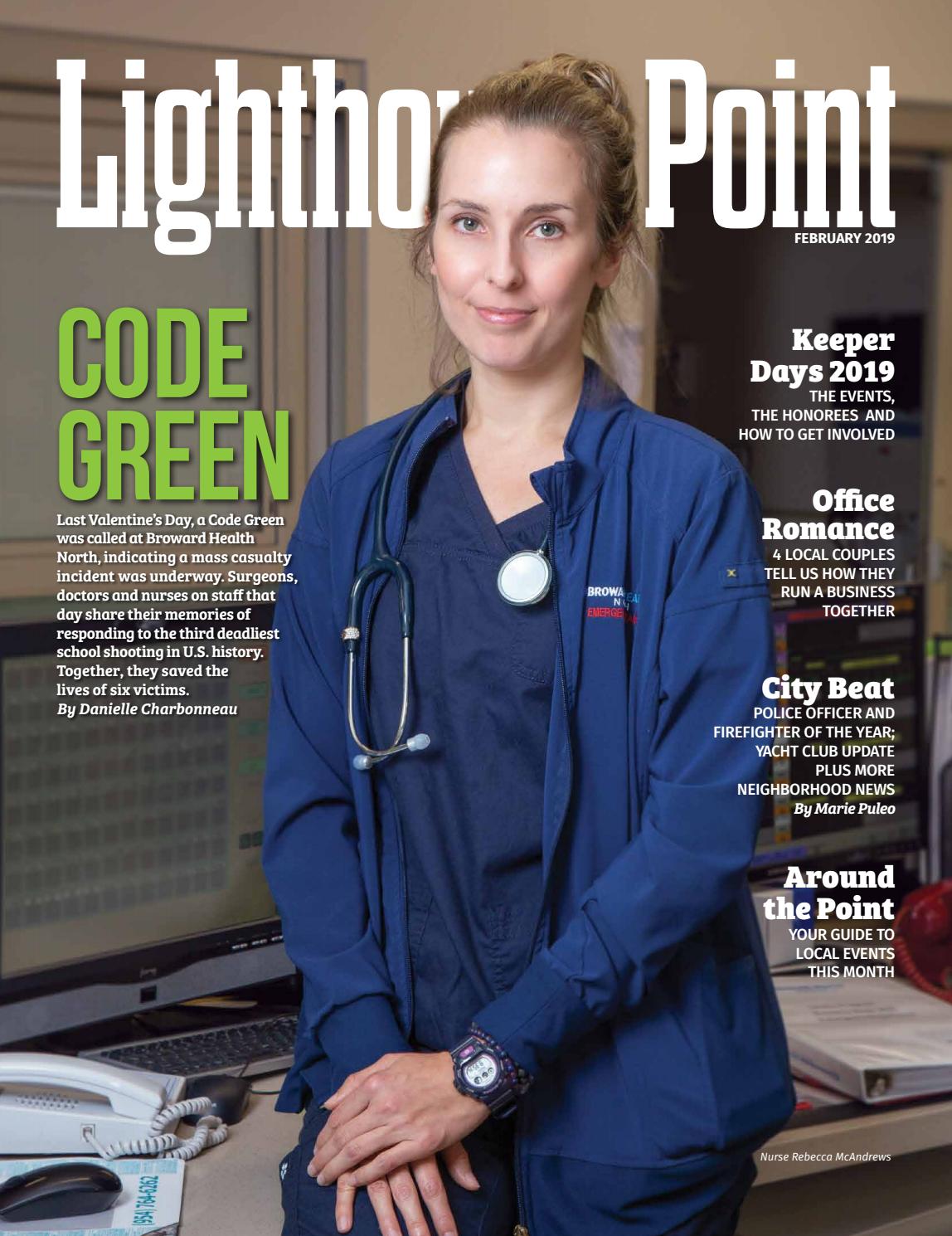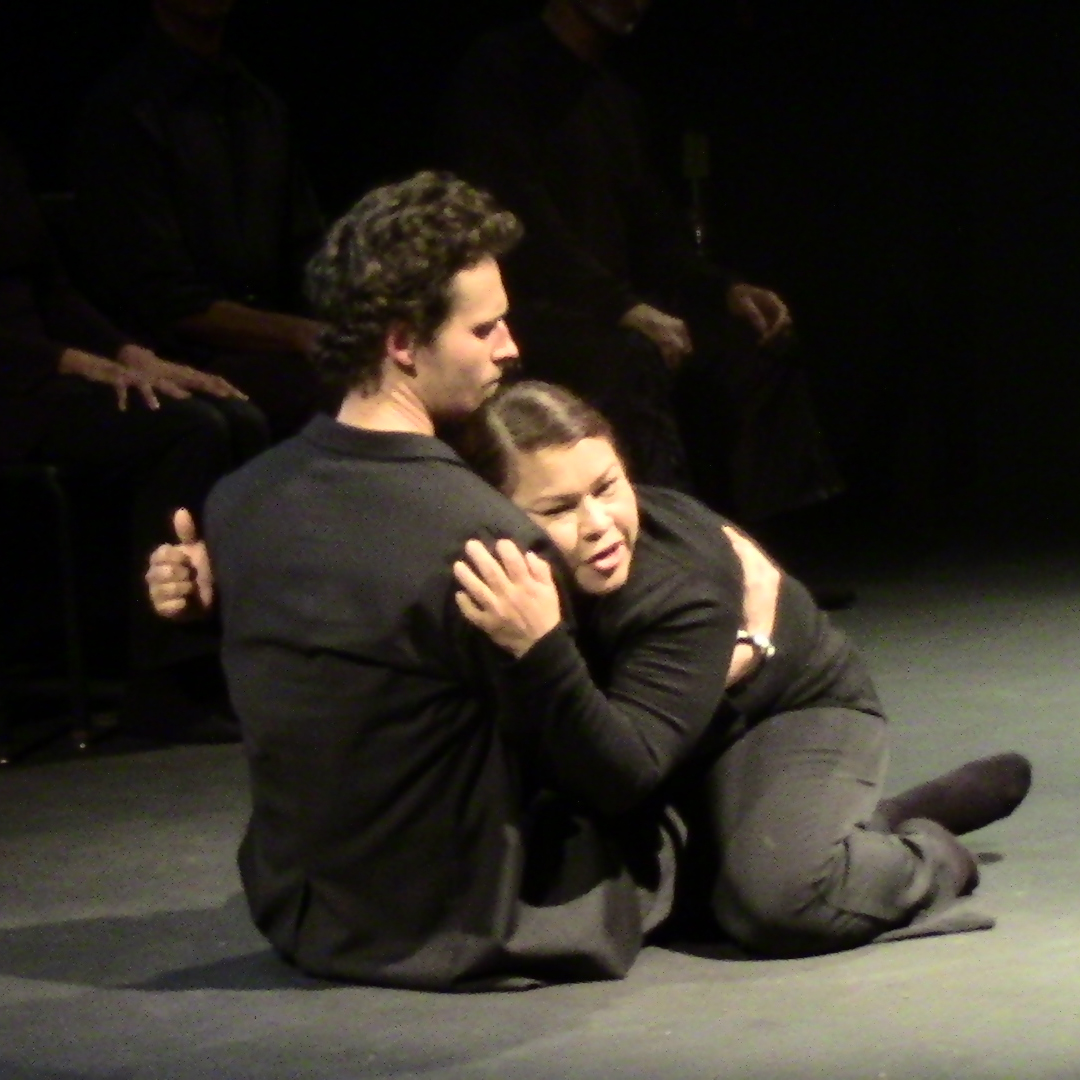On Valentine’s Day last year, Code Green was called at Broward Health North on the Pompano Beach-Deerfield Beach border. Code Green — the code called to initiate protocol for a mass casualty incident — signaled the entire hospital that a nearby tragedy was underway. The surgeons, doctors, nurses and support staff sprung to action to respond to Parkland’s Marjory Stoneman Douglas High School shooting, the third most tragic school shooting in U.S. history. Together, the emergency room team at Broward Health North’s level two trauma center saved six lives. These are their stories…
On Feb. 15, 2018, Dr. Igor Nichiporenko, the chief trauma surgeon and trauma medical director at Broward Health North, exited the emergency room in the dark morning hour after midnight, adrenaline still raging after hours of emergency surgeries. He had just finished one of the most intense days ever endured in his eight years as a trauma surgeon at Broward Health North.
On his way home to Lighthouse Point to his pregnant wife, an ICU nurse who was off that day with their 4-year-old son, he stopped at the 24-hour Walgreens at the corner of Sample Road and Federal Highway. He bought a Valentine’s bouquet of a dozen red roses wrapped in colorful plastic — the only flowers available next to the day-old newspaper stands not yet displaying the day’s headline tragedy — and returned home with a deep sense of gratitude that his wife and son lay peacefully in their beds.
“When you have to witness life and death, you appreciate your life, you appreciate what you have, more,” he said. “Every day you come home, you are blessed to have your family and your kids, and that gives you a different perspective, because earlier you saw someone losing their loved ones.”
That day, Dr. Nichiporenko had seen two families lose loved ones — the families of two victims who were both fatally injured during the Marjory Stoneman Douglas shooting. They had been transported, along with six other victims and the shooter, to the Emergency Department at Broward Health North.
Dr. Nichiporenko was just one of a united team of surgeons, doctors, nurses and support staff that day who worked arduously to minimize the damage done by the third most tragic school shooting in U.S. history. It was the team’s professionalism, expertise and coordination, coupled with Broward North’s newly-expanded level two trauma center, that made it possible for six families to welcome home their loved ones that dark day.
RED PHONE, CODE GREEN
That afternoon, Dr. Evan Boyar, Broward Health North’s chairman and medical director for emergency services, was working from home, about a mile away from Marjory Stoneman Douglas High School in Parkland. It was after 2pm and school was just letting out, so his wife had gone to pick up their two children, a 10-year-old and an 8-year-old, from elementary school.
While on the road, she noticed a lot of traffic and speeding vehicles and called her husband concerned. Dr. Boyar, distracted by work and having seen plenty of speeding cars in the neighborhood before, thought little of her concerns and dismissed her casually, telling her he would see her when she got home. When he hung up the phone, he immediately received a call from the Chief of Coral Springs Fire Rescue.
“He said, ‘We have an active shooter, anticipate multiple victims, we don’t know the number. They’re coming to you, be ready,’” Dr. Boyar remembered. “Simultaneously the hospital got pre-hospital information from dispatch.”
———————————–
Nurse Rebecca McAndrews was the charge nurse on duty that day who took the call from dispatch in the emergency department before Code Green was called.
“We have a red phone that’s directly connected to dispatch…When that red phone rings we know it’s usually something serious that’s coming in. It rang and they said there had been a shooting at a high school. They didn’t know how many victims there were going to be, but said to expect a lot of casualties. It’s always something shocking whenever that phone rings. We know it’s not going to be something ordinary like we deal with on a day-to-day basis.
“The first thing you think is, ‘Okay what do I have to do now?’ You have to put your feelings aside initially, so you don’t really process what it is that’s happening until after, which I think is what happened that day. We all just kind of jumped in and figured out what we had to do next to get ready.”
———————————–
Nurse Lea Ann Chidester was off that day, at home expecting a lazy afternoon. Her husband was outside in the Florida sunshine washing his car when she flicked on the news and learned of the shooting. She called out to her husband, a BSO firefighter-paramedic, to alert him. When he asked her where the shooting was and she responded “Parkland,” he reminded her that her hospital is the closest trauma facility to Marjory Stoneman Douglas High.
“I said, ‘Oh my God, you’re right,’” she said. The realization hit her abruptly.
“Immediately I started getting my scrubs on in anticipation and then I got, as part of a management team, an alert on my phone,” she said.
Nurse Chidester drove in silence to the hospital from her home in Pompano Beach, mentally preparing herself for the unknown awaiting her.
“I remember it felt like it took me three hours to get to work because I was determined to get there,” she said.
Dr. Nichiporenko was in a monthly meeting with the hospital’s CEO, Alice Taylor, when Dr. Boyar called to tell him about the shooting.
“He said ‘We have an active shooter in Parkland High School. Expect to receive multiple casualties, pediatric trauma with penetrating injuries….then, about two or three minutes later, Code Green was activated for the whole hospital,” Dr. Nichiporenko remembered.
Code Green is the code called at Broward North when a mass casualty incident has occurred. It activates a protocol for staff to take specific roles and positions within the hospital to prepare for, and subsequently treat, multiple trauma victims.
Coincidentally, on the 23rd of September 2016, Broward Health North had completed an active shooter Code Green drill where the team practiced taking care of multiple casualties from multiple gunshot wounds. That training prepared the hospital team for the reality of the day they were now experiencing.
At first, however, Dr. Nichiporenko said some thought it was just another drill.
“The atmosphere was unreal,” he said. “If you think of the circumstances — a mass casualty. Nobody thought that this would happen in a place like Parkland. It seems to be a quiet neighborhood with great public schools. Nobody ever thought that they would have a mass casualty event in that particular area… A lot of people took the news in disbelief, like it wasn’t really happening. But because of the protocol, and because of the drills and training we do, we all did our job.”
As the hospital was springing to action in response to the Code Green announcement, Dr. Boyar was driving like a mad man, racing from his home in Parkland to the hospital following closely behind emergency rescue vehicles coming from Marjory Stoneman Douglas High that were taking the same route he drives to the hospital.
“It’s normally about a 20-minute drive; I probably made it in about 14 minutes,” he recalled. “I was flying. You’re obviously thinking, and really what I was thinking was, ‘Okay, this is in my own backyard.’ So that has its own kind of implications. But they’re also coming to my hospital where I run our department, so I need to be ready. I have to make sure we take good care of everybody. And you just kind of go into this laser focus mode. And when I got here [at the hospital] we were in the midst of having our whole Code Green implemented.”
THE COMMAND CENTER
Dr. Boyar joined Dr. Nichiporenko, charge nurse McAndrews, and an entire team of other doctors, nurses, surgeons and other personnel at the command center in the emergency department.
“That’s where it all started,” said Dr. Nichiporenko.
“We had a command center at our charge nurse desk and then we had a central command center,” said Dr. Boyar. “From the command centers, duties and responsibilities get delegated, and the key is to adhere to your duty and responsibility. If you don’t stay in your lane, that’s where confusion takes place.
“No person is more important than another person…everything works together — radiology, blood bank, environmental services, everyone. That’s the key to a successful response to an MCI [Mass Casualty Incident] — stay in your lane, and respect everybody’s duties.”
“That was one of the most positive responses that we displayed in this department here — probably from years of drill, drill, drill, drill, drill — was that once everybody had their assignment, they stayed right in their lane.”
While his staff sometimes dislikes the drills, considering them “monotonous,” Dr. Boyar said that that day, everyone was tremendously thankful for having had the practice.
“Code Green activation requires drills, I can’t emphasize that enough,” he said. “When you get this call that this is real, this is active, you get an adrenaline surge of ‘Here we go.’ And you kind of just flip into a mode of pure focus.”
Nurse McAndrews was in charge of the command center at the nurse desk. Even before Code Green was called the ER was busy, so her first job was to get as many patients discharged, triaged or moved to make room for the incoming trauma victims.
“Then we had to make sure the trauma rooms were each set up with a trauma team of nurses, paramedics, respiratory therapists, ER doctors — we were making sure everyone was where they needed to be.
A number of additional medical professionals from outside the hospital also rushed in to help.
“We probably had about four or five teams assembled simultaneously,” said Dr. Boyar. “Those teams were assembled with our medical staff, our current emergency physicians here, our current trauma surgeons in-house, trauma surgeons that came in, general surgeons that were in-house, general surgeons that came in, all in our medical staff, vascular surgeons in-house and vascular surgeons that came in, thoracic surgeons… We had more resources than we actually utilized.”
Surprisingly, Nurse McAndrews said, “everyone was very calm, cool and collected.”
“There wasn’t any question as to who was going to do what. It was like, ‘Okay, what do you need? Where do I need to go?’ No questions asked. Everyone just kind of fell into place. Then we got that first patient and things rapidly picked up from there.”
The patients came in groups of three or four, said Dr. Nichiporenko.
“I think the first patient that arrived was in the first 15 minutes,” he said. “There was not really time to stand and wait and think of what’s coming, or what’s not coming. We were preparing for victims to come in and preparing to start working.
As the patients arrived, medical teams dispersed into their respective zones. In total, Broward Health North received nine patients, which included eight victims and one suspect. Of the nine patients, four patients were in non-life threatening condition, three patients were in life-threatening condition and two patients expired. Dr. Nichiporenko conducted three emergency surgeries, the last one ending just past midnight. Though he was in surgery late into the evening, the rush in the emergency department was over in just a few hours.
GETTING THE ALL-CLEAR
“It was probably over a period of three hours before we finally got the all-clear that there wasn’t going to be any more patients,” said nurse McAndrews. “At one point we were unsure because MedCom called us and asked how many more patients we could take. I looked at Dr. Boyar, and he said we could take as many as they have… but after that point, we didn’t get any more. I think all of us were kind of, almost, sad that we weren’t getting more patients because we knew there wasn’t anybody else — like there wasn’t anybody else for us to save.”
From that point on the ER was back open for business.
“And then by 6 o’clock, it was like you would have never had known — except for the media outside — what happened inside of our emergency room,” McAndrews said.
Though by appearances the emergency department was “back to normal,” Dr. Boyar said hospital personnel was not. He remembers how the emotional atmosphere completely shifted after the all-clear was given.
“Once that period of stabilization has ended, then you, and all the staff, get this overwhelming emotion of ‘I can’t believe this just happened. Was it my friend? Was it your friend? What’s going on here?’” said Dr. Boyar. “At the end it was kind of like everyone just took a breath and realized it was over, and then I think it hit people.”
“It was painful to realize that it was such a tragedy,” said Dr. Nichiporenko. “We had started getting more and more information on actually how many people died at the scene of the shooting. And when it all started sinking in, people were in a state of shock.”
Dr. Boyar and CEO Taylor held a debriefing meeting in a conference room off the east wing of the ER where staff packed in and overflowed into the hallway.
“All the seats were taken,” remembered Dr. Boyar. “And it was the whole gamut of who was involved, from the CEO of the hospital to our registration personnel to our environmental services — everybody who’s involved in a Code Green was here. I think it is a very important part of a Code Green, real mass casualty incident, to be able to have the debriefing process. Some people who wanted to speak got emotional and started crying, and that’s what they needed to do. It’s comforting that the person next to you feels the same way. And as leaders, we wanted everybody to understand that they did the best they could do for our community, and should be proud of that.”
Nurse Chidester said she can’t recall exactly what people spoke about, just that “there was a lot of tears, a lot of emotion in there.”
“It was a good way for us to have a moment of quiet and express our feelings and start the process of healing,” she said.
The debrief lasted only about 20 minutes. The ER was still open, with a waiting room full of new patients.
While the ER conference room was swarmed with hospital personnel for the debriefing, the hospital cafeteria was packed with the friends and families of Marjory Stoneman Douglas High students, all agonizing and waiting for news. CEO Taylor called Imperial Point hosptial, which has a behavioral health unit, to recruit as many grief counselors and therapists to come support.
“At the end of the day, when things were winding down, I went to the cafeteria…and that was just the most tragic moment I think all day — seeing those parents, knowing that they don’t know where their kids were,” said Taylor.
Seeing the parents and families was also the most difficult part of the day for Dr. Boyar.
“That was the hardest thing for me — knowing that parents send their children to school and their child doesn’t come home from school. That’s a hard thing to swallow,” he said. “As a parent I understand that. What we did was just to try to take care of our community the best that we can. Whatever strife we were feeling here, that’s nothing compared to the parents who actually lost a child.”
IN RETROSPECT
In retrospect, Dr. Boyar, Dr. Nichiporenko and CEO Taylor all said they are proud of the way the hosptial responded that day.
“The whole hospital worked like a well-oiled machine,” said Dr. Boyar.
The closeness of hospital staff was a major factor in the hospital’s ability to respond well, Dr. Nichiporenko said.
“It’s been always a pride of this hospital that we have a very low turnover of people who work here — we have the same physicians, same nurses, who work here for years and years,” he said. “And that’s probably very unique for our hospital. Besides people knowing each other and feeling comfortable working with each other, I think the main determining factor – why we did so well – is that we are a level two trauma center. Being a trauma center gives us enough experience, enough knowledge, enough resources, to deal with these kinds of issues in an efficient manner.”
The new emergency department at Broward Health North, which underwent a $26 million expansion in 2016, also aided in the hospital’s ability to act efficiently, Dr. Nichiporenko said.
“This is a hospital that’s designed and trained and equipped to take care of mass causality events. Our trauma rooms are designated to be converted into more spaces where you can bring in more stretchers and suddenly turn this one room that says one patient into a room that serves five patients at the same time…Our new big, spacious emergency room has enough room to not only evaluate patients, but also treat them.”
Maddy Wilford, one of the surviving Marjory Stoneman Douglas teenage victims who was operated on at Broward Health North following the shooting, is especially grateful. At a press conference almost two weeks after the shooting, she addressed a crowd inside the hospital, sitting at a table with her parents, Lt. Laz Ojeda of the Coral Springs Fire Department, Dr. Nichiporenko and Dr. Boyar.
“I’m so grateful to be here, and it wouldn’t be possible without those officers and first responders and these amazing doctors,” she said.
“That day everybody realized how close the community was, and how close people were in that emergency room,” said Dr. Nichiporenko, Maddy’s trauma surgeon. “We worked together as one unit, with one goal: to help patients, to help victims.”






